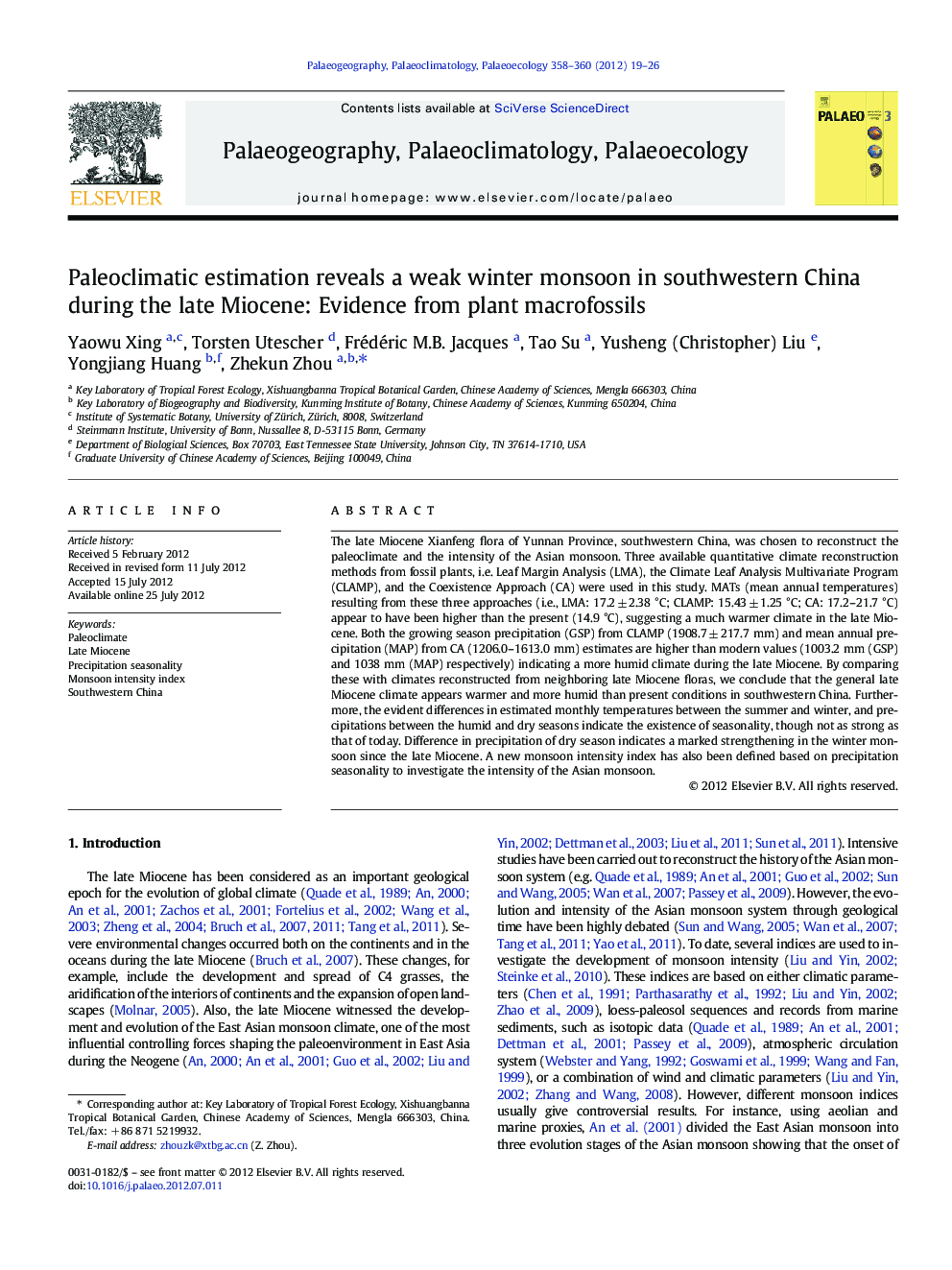| کد مقاله | کد نشریه | سال انتشار | مقاله انگلیسی | نسخه تمام متن |
|---|---|---|---|---|
| 4466666 | 1622222 | 2012 | 8 صفحه PDF | دانلود رایگان |

The late Miocene Xianfeng flora of Yunnan Province, southwestern China, was chosen to reconstruct the paleoclimate and the intensity of the Asian monsoon. Three available quantitative climate reconstruction methods from fossil plants, i.e. Leaf Margin Analysis (LMA), the Climate Leaf Analysis Multivariate Program (CLAMP), and the Coexistence Approach (CA) were used in this study. MATs (mean annual temperatures) resulting from these three approaches (i.e., LMA: 17.2 ± 2.38 °C; CLAMP: 15.43 ± 1.25 °C; CA: 17.2–21.7 °C) appear to have been higher than the present (14.9 °C), suggesting a much warmer climate in the late Miocene. Both the growing season precipitation (GSP) from CLAMP (1908.7 ± 217.7 mm) and mean annual precipitation (MAP) from CA (1206.0–1613.0 mm) estimates are higher than modern values (1003.2 mm (GSP) and 1038 mm (MAP) respectively) indicating a more humid climate during the late Miocene. By comparing these with climates reconstructed from neighboring late Miocene floras, we conclude that the general late Miocene climate appears warmer and more humid than present conditions in southwestern China. Furthermore, the evident differences in estimated monthly temperatures between the summer and winter, and precipitations between the humid and dry seasons indicate the existence of seasonality, though not as strong as that of today. Difference in precipitation of dry season indicates a marked strengthening in the winter monsoon since the late Miocene. A new monsoon intensity index has also been defined based on precipitation seasonality to investigate the intensity of the Asian monsoon.
► The climate was warmer and more humid than today in the late Miocene in Yunnan.
► The seasonality was weak during the late Miocene in Yunnan.
► A new palaeomonsoon intensity index is defined based on precipitation seasonality.
► The winter monsoon was markedly weaker than today in SW China in the late Miocene.
Journal: Palaeogeography, Palaeoclimatology, Palaeoecology - Volumes 358–360, 1 November 2012, Pages 19–26